This blog was written before the recent horrible events at Delta State University. My thoughts are with the community and its many warm and kind people.
 A few years back I recognized that I was getting stale—not bad, just not good—and that I was becoming calcified in my self-assurance. I don’t remember an exact moment when I noticed it. In any case, I didn’t want to become the teacher who boasts 20 years of experience, when he really means two years of experience repeated 10 times. I looked around until I found a seminar given by Columbia University and Theater for a New Audience, on teaching Shakespeare. I applied and was lucky enough to get in.
A few years back I recognized that I was getting stale—not bad, just not good—and that I was becoming calcified in my self-assurance. I don’t remember an exact moment when I noticed it. In any case, I didn’t want to become the teacher who boasts 20 years of experience, when he really means two years of experience repeated 10 times. I looked around until I found a seminar given by Columbia University and Theater for a New Audience, on teaching Shakespeare. I applied and was lucky enough to get in.
That first experience took me apart. It changed everything about me and how I teach, and I’ve been addicted to seminars ever since. In the years since then, I’ve been all over the country, attending just about anything that’ll let me in. The results have varied from transformative to “at least I got a free poster.” I like it best when I come away changed, when I feel like the ground has shifted under my feet and I need to rebuild. For me, that’s the marker of effective professional development.
PD’s Broader Purpose
Sometimes, though, a seminar isn’t as much about learning a new approach or finding something to build into my own practice. It’s about the landscape and the people I meet. It’s about changing the way I think about myself, as a teacher, a student, and a human being.
I find that being around really good teachers—smart, inspired, creative, risk-taking teachers—is what changes me. I like being in the “learning chair”: the worst teacher in the room, the least informed person in the seminar. It means I’ll be learning.
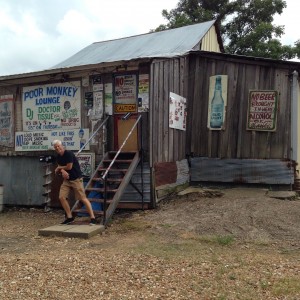 This year found me at Delta State University in Mississippi, “the most Southern place on Earth.” There, among outstanding teachers from all over the country, I spent an exhausting week working through everything that the Delta has to offer.
This year found me at Delta State University in Mississippi, “the most Southern place on Earth.” There, among outstanding teachers from all over the country, I spent an exhausting week working through everything that the Delta has to offer.
The Delta is a place of conflicted history and rich culture. Teachers and caretakers there are charged with the task of tending a dying region, while parceling out the memory to everyone they meet. And so this seminar fell into the category of ground shaking and attitude changing. It forced us to think about places almost none of us had visited, from an old cemetery for Chinese immigrants, to an aging Jewish synagogue, to Po’ Monkey’s Juke Joint, perhaps the last “true” juke joint in the Delta, and a place where people dance with abandon as the night grows late.
Rediscovering Mockingbird, in the Courtroom
One afternoon, my classmates and I were able to participate in a panel discussion on the Emmett Till case. On the panel were the last people, other than his murderers, to see Till alive: his uncle and an FBI agent who reopened that case in 2004. The discussion took place in the actual courtroom where the original miscarriage of justice occurred.
Those of us in the language arts huddled afterward to talk about the connections to To Kill a Mockingbird. Being in the place makes the emotions of the novel more real. The ghosts are real and the voices seem to seep in from the gallery, and I feel closer to the truth of the books I’ve taught for years.
Keeping Traditions Alive in the Classroom
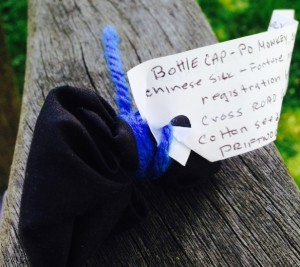 On our last day in the Delta, I made a mojo, a little pouch that contains bits and pieces of the places you visited, people you met, and sites you want to return to someday. You display it somewhere people will see it and ask about it, and every time you talk about it, the magic of the mojo gets stronger.
On our last day in the Delta, I made a mojo, a little pouch that contains bits and pieces of the places you visited, people you met, and sites you want to return to someday. You display it somewhere people will see it and ask about it, and every time you talk about it, the magic of the mojo gets stronger.
Like that mojo, Mississippi offered a strange mix for me. I didn’t walk away with a notebook full of new techniques—I did get some, though. But when I see a guest lecturer pick up a diddley bow—a guitar made out of a cigar box, broomstick, and a single string—and pull so much emotion out it while he teaches a class of rapt students about the history of the blues in the Delta, I understand how important passion is to teaching. I see how being able to demonstrate something, and let students try it themselves, makes learning so much richer.
Even though so much of what I saw showed me something that was slipping away, or already gone, I wasn’t sad. It’s another of those weird paradoxes of this place. All of the people I met have a sense of duty, to the past but also to the future. They tell stories to us, teachers from all over the United States, trusting that we will carry them back with us and teach them to our students, so that the sound of the blues, that heartbeat rhythm, won’t disappear.
 Rick Kreinbring teaches English at Avondale High School in Auburn Hills, Michigan. His current assignments include teaching AP Language and Composition and AP Literature and Composition. He is a member of a statewide research project through the Michigan Teachers as Researchers Collaborative partnered with the MSU Writing in Digital Environments Program, which concentrates on improving student writing and peer feedback. Rick has presented at the National Advanced Placement Convention and the National Council of Teachers of English Conference. He is in his twenty-third year of teaching and makes his home in Huntington Woods.
Rick Kreinbring teaches English at Avondale High School in Auburn Hills, Michigan. His current assignments include teaching AP Language and Composition and AP Literature and Composition. He is a member of a statewide research project through the Michigan Teachers as Researchers Collaborative partnered with the MSU Writing in Digital Environments Program, which concentrates on improving student writing and peer feedback. Rick has presented at the National Advanced Placement Convention and the National Council of Teachers of English Conference. He is in his twenty-third year of teaching and makes his home in Huntington Woods.

 As the Tumblr experiment progresses, I’m faced with a difficult question about evaluation and feedback
As the Tumblr experiment progresses, I’m faced with a difficult question about evaluation and feedback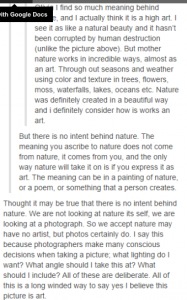

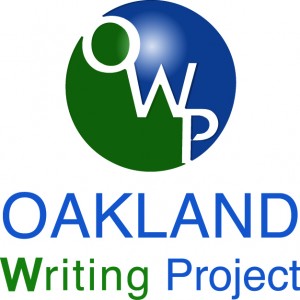 The
The 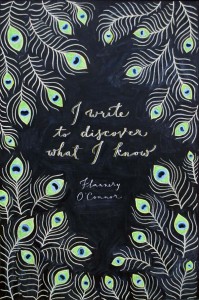
 Theme dragons…these beasts are so fierce. They can linger, haunt a reader. Shy away from a craft dragon–I struggle with stream of consciousness–and probably it won’t make a difference in your life, just avoid it. Fear of theme dragons is something different.
Theme dragons…these beasts are so fierce. They can linger, haunt a reader. Shy away from a craft dragon–I struggle with stream of consciousness–and probably it won’t make a difference in your life, just avoid it. Fear of theme dragons is something different.  Asking students to confront theme dragons often means asking them to expose their fears, weakness, doubts and prejudices to their peers and then be evaluated on that battle. What could be more terrifying? But that is exactly what we ask students to do when they read and write. When they are successful and make a connection to their audience it’s often because the writer has found a way to portray their voice. They write in ways that conveys a sense of themselves to an audience. I think that’s a function of voice, and it is what I want them to develop. In the next few weeks, I’ll be looking at and helping students with their college essays. I’ve done it for years and those topics don’t change, “Consider a time…” What the colleges are asking for is that the student pull out a dragon, fight it and hope that it’ll get them into college. That’s a high stakes fight and if it’s the first time a student has been asked to do it, I end up reading a lovely, generic travelogue that sounds nothing like the interesting, engaging complicated people in my classes. I need the dragons in my class. I need to find them, drag them into my students’ paths and help them give voice to the struggle.
Asking students to confront theme dragons often means asking them to expose their fears, weakness, doubts and prejudices to their peers and then be evaluated on that battle. What could be more terrifying? But that is exactly what we ask students to do when they read and write. When they are successful and make a connection to their audience it’s often because the writer has found a way to portray their voice. They write in ways that conveys a sense of themselves to an audience. I think that’s a function of voice, and it is what I want them to develop. In the next few weeks, I’ll be looking at and helping students with their college essays. I’ve done it for years and those topics don’t change, “Consider a time…” What the colleges are asking for is that the student pull out a dragon, fight it and hope that it’ll get them into college. That’s a high stakes fight and if it’s the first time a student has been asked to do it, I end up reading a lovely, generic travelogue that sounds nothing like the interesting, engaging complicated people in my classes. I need the dragons in my class. I need to find them, drag them into my students’ paths and help them give voice to the struggle. The blogging universe is huge and can feel overwhelming, so my students’ first challenge was to carve out a bit of it for our own community. Our first assignment was to create blogs and find each other. Enter the hashtag. Students know how to use hashtags to organize their posts or tweets around topics, so I use them with Tumblr as well. Our first one is aplang15hello. Hashtags are a great way to tame the vastness of the blogosphere, but I need something that’s easy to identify and stands out. The first part identifies the class and the second part, after the 15, is the subject. This is our way to “find” each other. We search for the unique hashtag which leads us to each others’ blogs. Then it’s a simple click on the “Follow” button and, hello audience.
The blogging universe is huge and can feel overwhelming, so my students’ first challenge was to carve out a bit of it for our own community. Our first assignment was to create blogs and find each other. Enter the hashtag. Students know how to use hashtags to organize their posts or tweets around topics, so I use them with Tumblr as well. Our first one is aplang15hello. Hashtags are a great way to tame the vastness of the blogosphere, but I need something that’s easy to identify and stands out. The first part identifies the class and the second part, after the 15, is the subject. This is our way to “find” each other. We search for the unique hashtag which leads us to each others’ blogs. Then it’s a simple click on the “Follow” button and, hello audience.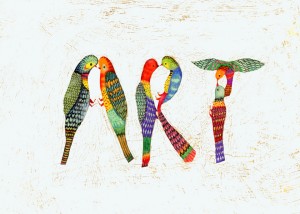 I also came up against the audience problem. Having their teacher as audience/evaluator/giver of points meant they wrote safe and “schooly”–their word–rather than honestly. I didn’t want safe writing. I wanted them to take chances, fail sometimes, learn and then come back again.
I also came up against the audience problem. Having their teacher as audience/evaluator/giver of points meant they wrote safe and “schooly”–their word–rather than honestly. I didn’t want safe writing. I wanted them to take chances, fail sometimes, learn and then come back again.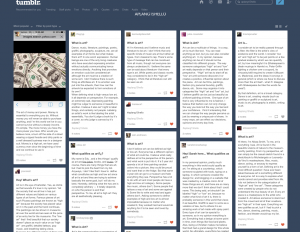 This image shows some of our initial forays on to the Tumblr microblogging platform. Tumblr microblogs typically offer shorter content than blogs, another aspect that drew me to it. It’s less daunting than the essay-like blog but more demanding that something like Twitter.
This image shows some of our initial forays on to the Tumblr microblogging platform. Tumblr microblogs typically offer shorter content than blogs, another aspect that drew me to it. It’s less daunting than the essay-like blog but more demanding that something like Twitter.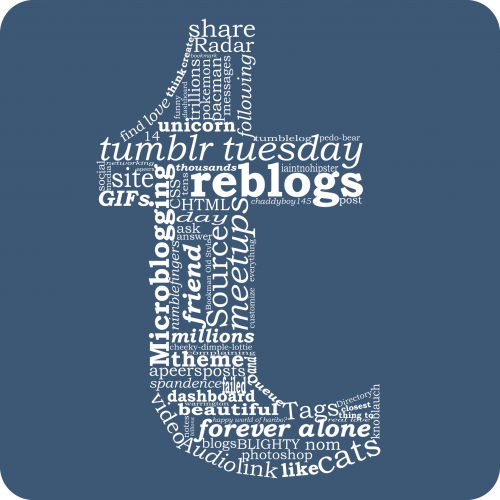 It’s here where our discussion about audience starts to bear out. What kind of writing attracts and holds our attention? Tumblr is an image rich environment with most users simply scrolling through until something catches their attention. The question for writers becomes: how do we compete for that attention?
It’s here where our discussion about audience starts to bear out. What kind of writing attracts and holds our attention? Tumblr is an image rich environment with most users simply scrolling through until something catches their attention. The question for writers becomes: how do we compete for that attention?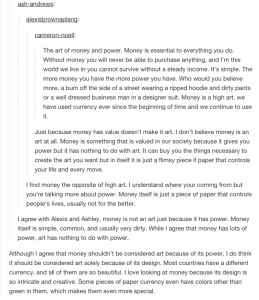
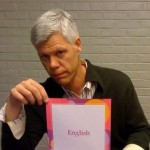 Rick Kreinbring teaches English at Avondale High School in Auburn Hills, Michigan. His current assignments include teaching AP Language and Composition and AP Literature and Composition. He is a member of a
Rick Kreinbring teaches English at Avondale High School in Auburn Hills, Michigan. His current assignments include teaching AP Language and Composition and AP Literature and Composition. He is a member of a  In an earlier post “
In an earlier post “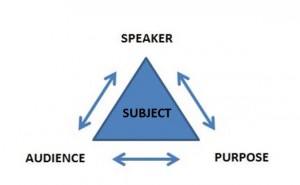

 Click to read
Click to read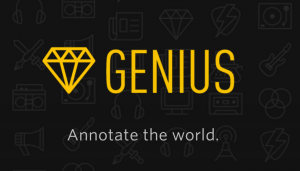 This reality came to light during a class where I was talking about how we’re going to be using the site
This reality came to light during a class where I was talking about how we’re going to be using the site  What they said was that they liked Genius.com because it was “cool.” Great, what do I do with that? The quest for “cool” has always meant “cool until the adults find out about it” and that’s not what I’m looking for. But as I listened more closely, I heard them say other things. They talked about the design of the site, how the black background and yellow font was code to them that said something about the audience and what was expected. It was “looser” and “more casual,” which again was code that meant that they could write “like themselves.” They were talking about voice, authenticity, honesty. To my teacher’s ears, “like themselves,” too often meant sloppy arguments, careless grammar and generally bad writing–all the things I am trying to educate out of them. And sometimes it does mean that, but what they were talking about was the freedom to use their own authentic voices. They were talking about the freedom to take risks without being judged, not just by their teacher, but by the site itself.
What they said was that they liked Genius.com because it was “cool.” Great, what do I do with that? The quest for “cool” has always meant “cool until the adults find out about it” and that’s not what I’m looking for. But as I listened more closely, I heard them say other things. They talked about the design of the site, how the black background and yellow font was code to them that said something about the audience and what was expected. It was “looser” and “more casual,” which again was code that meant that they could write “like themselves.” They were talking about voice, authenticity, honesty. To my teacher’s ears, “like themselves,” too often meant sloppy arguments, careless grammar and generally bad writing–all the things I am trying to educate out of them. And sometimes it does mean that, but what they were talking about was the freedom to use their own authentic voices. They were talking about the freedom to take risks without being judged, not just by their teacher, but by the site itself. Keep in mind that I use both of these platforms (Google Docs and Eli Review) as places for my students to interact with each others’ writing and ideas. I have been alternately pleased and frustrated by the results. But it had never occurred to me that although I expressly told them that they were to engage with each other–that their classmates were the audience–they felt pressure from me. Not because I said anything, but because I had created the space, given it my traits, so the space itself was whispering requirements to them, telling them that their writing had to be “schooly.” Years of schooling have taught them that school writing has strict requirements. That to be “scholarly” and “academic” they had to strip the personality, the voice, out of their writing. This lesson has become so ingrained that they could sense it lurking in these academic sites, and they weren’t about to be fooled into authenticity. They certainly didn’t trust me when I said anything to the contrary. The site told them the truth–that outside of creative writing in school, they had to be academic–dry and in many ways false.
Keep in mind that I use both of these platforms (Google Docs and Eli Review) as places for my students to interact with each others’ writing and ideas. I have been alternately pleased and frustrated by the results. But it had never occurred to me that although I expressly told them that they were to engage with each other–that their classmates were the audience–they felt pressure from me. Not because I said anything, but because I had created the space, given it my traits, so the space itself was whispering requirements to them, telling them that their writing had to be “schooly.” Years of schooling have taught them that school writing has strict requirements. That to be “scholarly” and “academic” they had to strip the personality, the voice, out of their writing. This lesson has become so ingrained that they could sense it lurking in these academic sites, and they weren’t about to be fooled into authenticity. They certainly didn’t trust me when I said anything to the contrary. The site told them the truth–that outside of creative writing in school, they had to be academic–dry and in many ways false.
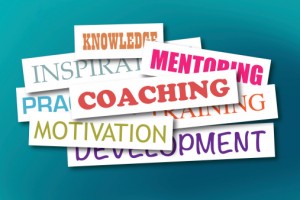 Recognize and acknowledge students’ difficulty and the effort. “I know this is hard, and I can see you’re…” It’s unnatural and hard to go from being an excellent talker to being a deliberate writer. Putting myself in the role of learner reminded me of that.
Recognize and acknowledge students’ difficulty and the effort. “I know this is hard, and I can see you’re…” It’s unnatural and hard to go from being an excellent talker to being a deliberate writer. Putting myself in the role of learner reminded me of that. Never forget your audience. Like much of what I learned, this applies to students and teachers. It’s all about moving your audience. This goes for writers, actors and teachers. I think of those long-winded professors I had in college. Droning on, oblivious to the blanks stares, they might as well have been talking to a mirror. (Any teacher who thinks that a lecture is a good way to teach should be forced to actually sit through one.) It’s not about the director, or the actor, or the writer. It’s about getting that audience where they need to be. As a teacher, I think about the purpose–where I want to be–but I try to listen to my audience; find out what works for them and use that to reach the purpose.
Never forget your audience. Like much of what I learned, this applies to students and teachers. It’s all about moving your audience. This goes for writers, actors and teachers. I think of those long-winded professors I had in college. Droning on, oblivious to the blanks stares, they might as well have been talking to a mirror. (Any teacher who thinks that a lecture is a good way to teach should be forced to actually sit through one.) It’s not about the director, or the actor, or the writer. It’s about getting that audience where they need to be. As a teacher, I think about the purpose–where I want to be–but I try to listen to my audience; find out what works for them and use that to reach the purpose. Several years ago, I went in search of an audience for my students, although at the time I didn’t know that was what I was up to. I’d seen enough student writing to know I wasn’t doing something right in my instruction. My students were smart, interesting and capable of all manner of argument, but their writing didn’t reflect that. However, they were willing to risk suspension by breaking through the district’s internet firewall to reach sites like Myspace and Facebook where they wrote (Wrote!) about things they cared about in ways that reflected their personalities. This was what I was looking for. So I started a website where my students and I could build on the conversations we were having in class, and they could write in the same way they wrote on social media sites. I envisioned a free flowing forum of ideas and enthusiasm, a place for authentic voices like I’d seen on Facebook and Myspace, like I’d heard in my classroom. Yeah, I was wrong.
Several years ago, I went in search of an audience for my students, although at the time I didn’t know that was what I was up to. I’d seen enough student writing to know I wasn’t doing something right in my instruction. My students were smart, interesting and capable of all manner of argument, but their writing didn’t reflect that. However, they were willing to risk suspension by breaking through the district’s internet firewall to reach sites like Myspace and Facebook where they wrote (Wrote!) about things they cared about in ways that reflected their personalities. This was what I was looking for. So I started a website where my students and I could build on the conversations we were having in class, and they could write in the same way they wrote on social media sites. I envisioned a free flowing forum of ideas and enthusiasm, a place for authentic voices like I’d seen on Facebook and Myspace, like I’d heard in my classroom. Yeah, I was wrong. This all happened at the turn of the century, but the idea of 21st century literacy wasn’t on my radar. I wasn’t thinking about how drastically teaching reading and writing was going to be impacted by the World Wide Web. I just wanted to be in on what was happening. Though my first failures did send me in a new direction. My students were using platforms like MySpace to say things about themselves, to give their opinions, and to challenge each others’ ideas. It was entirely social, but what they were doing was writing, sometimes with letters and words, sometimes with images. But it’s all text, and that’s what drew me in. So I tried again.
This all happened at the turn of the century, but the idea of 21st century literacy wasn’t on my radar. I wasn’t thinking about how drastically teaching reading and writing was going to be impacted by the World Wide Web. I just wanted to be in on what was happening. Though my first failures did send me in a new direction. My students were using platforms like MySpace to say things about themselves, to give their opinions, and to challenge each others’ ideas. It was entirely social, but what they were doing was writing, sometimes with letters and words, sometimes with images. But it’s all text, and that’s what drew me in. So I tried again. the way my students wrote. Their voices faded. Those few times I did manage to spark something good–thoughtful, honest writing with authentic voices about a text we were looking at–then their writing became self supporting. Students abandoned me as audience and wrote for each other, fed off each other and it had very little–actually nothing–to do with me. In fact, I was very careful not to enter into the conversation because as soon as I said anything, their writing changed course and was directed at replicating the thing I’d praised. The writing even changed when students knew that I was lurking but not writing anything. Many of them would lose the nerve to be the writers they really were. It didn’t matter that I told them that their audience was each other; my mere virtual presence changed how they wrote. When I became their audience, they tried to write like students. But when their audience was other students, they wrote like writers. They had more confidence, took risks, and tried to engage the each other. In short, they did what writers do.
the way my students wrote. Their voices faded. Those few times I did manage to spark something good–thoughtful, honest writing with authentic voices about a text we were looking at–then their writing became self supporting. Students abandoned me as audience and wrote for each other, fed off each other and it had very little–actually nothing–to do with me. In fact, I was very careful not to enter into the conversation because as soon as I said anything, their writing changed course and was directed at replicating the thing I’d praised. The writing even changed when students knew that I was lurking but not writing anything. Many of them would lose the nerve to be the writers they really were. It didn’t matter that I told them that their audience was each other; my mere virtual presence changed how they wrote. When I became their audience, they tried to write like students. But when their audience was other students, they wrote like writers. They had more confidence, took risks, and tried to engage the each other. In short, they did what writers do.
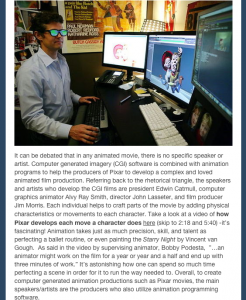
 Different disciplines define “audience” using other words, but it all comes down to the perception and experience of the end user. All products, all successful products, are designed with the user in mind, as determined by product testing or a focus group. Art and music, while often very personal, succeed when they “find and audience.” Sketching, journaling, and playing random chords because they please you is fine because you are the only audience. But if you want to find out if you’re good, however that’s defined, you need an audience.
Different disciplines define “audience” using other words, but it all comes down to the perception and experience of the end user. All products, all successful products, are designed with the user in mind, as determined by product testing or a focus group. Art and music, while often very personal, succeed when they “find and audience.” Sketching, journaling, and playing random chords because they please you is fine because you are the only audience. But if you want to find out if you’re good, however that’s defined, you need an audience. In the past couple of years, I have been putting more and more emphasis on the importance of audience in writing. I talk with my students about who their audience is, its characteristics, what moves it, and recently, we talked about what might delight the audience. The mantra “when you write for everyone, you write for no one” echoes through my room as we try to imagine that one person we’re trying to reach. (I know who it is for this piece.)
In the past couple of years, I have been putting more and more emphasis on the importance of audience in writing. I talk with my students about who their audience is, its characteristics, what moves it, and recently, we talked about what might delight the audience. The mantra “when you write for everyone, you write for no one” echoes through my room as we try to imagine that one person we’re trying to reach. (I know who it is for this piece.) I am in a play. It’s an Avondale Schools staff and alumni production of Thornton Wilder’s Our Town. My role is Doc Gibbs. I have never acted or been part of theater company, but I was asked by a colleague to take a risk and show my students I wasn’t afraid to step outside the usual role of teacher. I was intrigued. I accepted the invitation.
I am in a play. It’s an Avondale Schools staff and alumni production of Thornton Wilder’s Our Town. My role is Doc Gibbs. I have never acted or been part of theater company, but I was asked by a colleague to take a risk and show my students I wasn’t afraid to step outside the usual role of teacher. I was intrigued. I accepted the invitation. Writing is also an unnatural act. Human beings have a voice box that evolution has designed to create speech. It’s unique to us. We have no such organ designed for writing. Speech is natural; writing is not. I encountered this idea in a piece by Dylan B. Dryer, a professor at the University of Maine. He contends that when measured against the naturalness and ease of speech, writers tend to judge their efforts harshly. This idea was banging around in my head when I took up the script of Our Town to learn my lines.
Writing is also an unnatural act. Human beings have a voice box that evolution has designed to create speech. It’s unique to us. We have no such organ designed for writing. Speech is natural; writing is not. I encountered this idea in a piece by Dylan B. Dryer, a professor at the University of Maine. He contends that when measured against the naturalness and ease of speech, writers tend to judge their efforts harshly. This idea was banging around in my head when I took up the script of Our Town to learn my lines. For years I approached teaching writing as though it were natural, as natural as speaking. I exposed students to “good writing,” provided models and rubric, and gave instruction. But the idea at the core was that the ability to write well was buried somewhere inside of my students and by my efforts, it would be awakened–this dormant, but natural, ability. After all, they can speak in sentences and that skill developed because they were spoken to, or were near other speakers. They learned by osmosis or proximity. The same should hold for the written word. I thought good writing would rub off on my students the way good or bad habits of speech do. I considered writing a natural act, and I taught it that way. To be fair, this is how I was taught. Some of my students did become good writers, but most didn’t. They didn’t simply move from speaking to writing with a bumpy transition period. It was frustrating for them and for me.
For years I approached teaching writing as though it were natural, as natural as speaking. I exposed students to “good writing,” provided models and rubric, and gave instruction. But the idea at the core was that the ability to write well was buried somewhere inside of my students and by my efforts, it would be awakened–this dormant, but natural, ability. After all, they can speak in sentences and that skill developed because they were spoken to, or were near other speakers. They learned by osmosis or proximity. The same should hold for the written word. I thought good writing would rub off on my students the way good or bad habits of speech do. I considered writing a natural act, and I taught it that way. To be fair, this is how I was taught. Some of my students did become good writers, but most didn’t. They didn’t simply move from speaking to writing with a bumpy transition period. It was frustrating for them and for me. I wanted to be a better teacher, so I started working through different approaches and models. I pieced things together, tried, and failed and attempted to learn from my efforts. Gradually, I got better, but when I encountered the idea of writing as unnatural it crystallized for me. Of course my early efforts were misguided. My expectations were based on a false premise. Writing habits aren’t something my students could naturally adopt because writing is unnatural. Before I came to this idea, I looked at writing the way I might’ve looked at something natural, say walking. My students needed needed help standing: so I gave them a framework to lean on, the 5 paragraph essay, until they got steady. They leaned on these complicated rubrics and paragraph models that looked like a set of Ikea instructions. But their writing was mechanical and clumsy and bore no resemblance to the writing we read and they liked.
I wanted to be a better teacher, so I started working through different approaches and models. I pieced things together, tried, and failed and attempted to learn from my efforts. Gradually, I got better, but when I encountered the idea of writing as unnatural it crystallized for me. Of course my early efforts were misguided. My expectations were based on a false premise. Writing habits aren’t something my students could naturally adopt because writing is unnatural. Before I came to this idea, I looked at writing the way I might’ve looked at something natural, say walking. My students needed needed help standing: so I gave them a framework to lean on, the 5 paragraph essay, until they got steady. They leaned on these complicated rubrics and paragraph models that looked like a set of Ikea instructions. But their writing was mechanical and clumsy and bore no resemblance to the writing we read and they liked. Realizing that writing is not natural changed the way I approach teaching it. It isn’t an ability to be awakened any more than a father’s ability to talk to his son. It is a habit that is developed. With this in mind, I find it easier and more natural that we should have to work so hard at writing and teaching writing. My students and I participate in the unnatural act of writing together. I keep a writer’s’ notebook and write with them, sharing my own frustrations with this unnatural activity. Unnatural activities have to be made less uncomfortable and that can happen by simply acknowledging the difficulty, not from without as a “teacher” of writing, but as member of the struggling writing community. It involves taking risks by making our thoughts and habits public. In this way, acting and writing feel oddly similar. I didn’t know I touched my face when I was nervous until I had to communicate a character to an audience from the stage, and I didn’t notice my love of alliterative language until a reader of my writing pointed it out to me. Turns out, both habits are distracting.
Realizing that writing is not natural changed the way I approach teaching it. It isn’t an ability to be awakened any more than a father’s ability to talk to his son. It is a habit that is developed. With this in mind, I find it easier and more natural that we should have to work so hard at writing and teaching writing. My students and I participate in the unnatural act of writing together. I keep a writer’s’ notebook and write with them, sharing my own frustrations with this unnatural activity. Unnatural activities have to be made less uncomfortable and that can happen by simply acknowledging the difficulty, not from without as a “teacher” of writing, but as member of the struggling writing community. It involves taking risks by making our thoughts and habits public. In this way, acting and writing feel oddly similar. I didn’t know I touched my face when I was nervous until I had to communicate a character to an audience from the stage, and I didn’t notice my love of alliterative language until a reader of my writing pointed it out to me. Turns out, both habits are distracting.